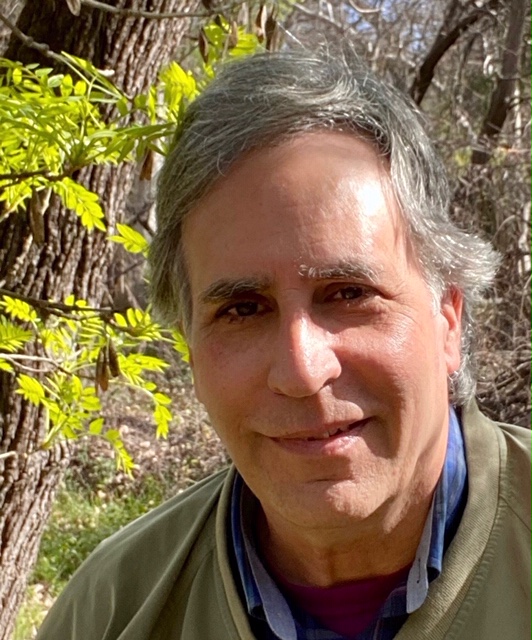Bringing Meditation Home
Like most places, this town in northern California is growing too rapidly and chaotically. Though it’s still often quiet where I live, increasingly the din from nearby roads intrudes, bringing the continuous roar of the machine into the backyard.
Habitually and automatically, the mind ‘tunes out’ noise. That is considered normal and necessary. But it’s really a small example of how we humans adapt to anything, and lose our potential to experience something beyond this increasingly mundane, monotonous world.
As a writer who, thankfully, determines his own schedule, my routine has been to begin the day by reading the news, reflecting a bit, and starting a piece, before getting out on the bike for a sitting in the park or country a few miles away. Having a tendency to think too much, the contact with nature, and time spent simply observing the movement outside and inside, provide the best counterweight, and balance the day. (A walk and/or run along the trails or on the track offer additional equilibrium.)
Lately I’ve begun supplementing the solitary sittings in nature with 15 minutes or so of observation in the backyard during the evenings. The results have been mixed, though interesting from a contemplative point of view.
Besides frequent traffic noise, there are quite a few dogs around here (where not in America these days!). With respect to meditation, some traffic noise and a little barking is fine, but on weekends during the summer, there are car races at the racetrack a few miles away that generate enough racket to keep even the insensate indoors (except for the ones at the track of course).
Though I love solitude, I’m also a social person, and have never been the kind of contemplative drawn to a monastic life. I like meeting and talking with people, enjoying a glass of beer or wine, and being engaged in the world.
I feel that meditation and transformation are not just for the few, but the birthright of and imperative for every human being. Of course if faced with a choice between the religious life and joining the madding crowd, there is, to my mind, no choice.
I don’t know if we’re hitting bottom in America, but more and more people are drawing water from their own wells in this cultural desert. At some point life has to return.
Having awakened meditation in relatively unspoiled surroundings all my adult life, the backyard sittings are an attempt to literally bring meditation home. It’s difficult to end the known when surrounded by nature, but it’s much harder to see people and things anew when what you think you know best is within sight.
And yet that’s just what we must do if meditation and transformation are to be the rule rather than the exception in daily and social life.
The first and last step to meditation is ending psychological division within oneself, that is, the duality of the watcher and the watched, which is the basis of all division between ‘me’ and ‘not me,’ us and them, and my country or religion versus yours.
However noisy and personal it seems, consciousness is actually a single movement, a vast web of content in which all of us are caught, as both inheritors and progenitors. Meditation means passively but intensely watching one’s own part of human consciousness as a single movement, which naturally and effortlessly quiets down the mind.
As long as there is any goal, effort, or method for meditation however, it’s still part of a program, and precludes awakening. One avoids this mistake by making the arduous spadework of observing the ebb and flow of consciousness in oneself into a form of play. Then one’s awareness effortlessly grows acute, and everything that comes into the field becomes new and interesting.
What does all this have to do with traffic noise and barking dogs? I’ve learned that if sensory input isn’t too intrusive, observing reactions to the disturbances is most instructive, teaching one how to meditate in the world as it is.
Also, by attending to the often subconscious tuning out of unpleasant or habitual things, the blocking mechanism dissolves, and one adjusts without adapting (that is, becoming inured) to society.
In one sense then, meditation is the act, through passive observation, of finishing with familiarity and habit, as a gathering attention restores, renews, and deepens perception. That’s why home is the hardest place to meditate.
- Martin LeFevre is a contemplative, and non-academic religious and political philosopher. He has been publishing in North America, Latin America, Africa, and Europe (and now New Zealand) for 20 years. Email: martinlefevre@sbcglobal.net. The author welcomes comments.



 Richard S. Ehrlich: Cyber-Spying 'From Lhasa To London' & Tibet Flexing
Richard S. Ehrlich: Cyber-Spying 'From Lhasa To London' & Tibet Flexing Gordon Campbell: On Aussie Election Aftershocks And Life Lessons
Gordon Campbell: On Aussie Election Aftershocks And Life Lessons Martin LeFevre - Meditations: Regarding Popes, Dopes And Hopes
Martin LeFevre - Meditations: Regarding Popes, Dopes And Hopes Binoy Kampmark: Fantasy And Exploitation | The US-Ukraine Minerals Deal
Binoy Kampmark: Fantasy And Exploitation | The US-Ukraine Minerals Deal Gordon Campbell: On The Aussie Election Finale
Gordon Campbell: On The Aussie Election Finale Martin LeFevre - Meditations: The Enlightenment Is Dead; What Is True Enlightenment?
Martin LeFevre - Meditations: The Enlightenment Is Dead; What Is True Enlightenment?